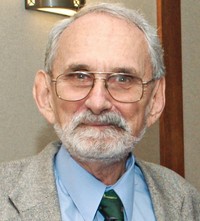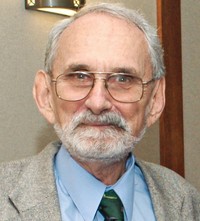Advertisement
Grab your lab coat. Let's get started
Welcome!
Welcome!
Create an account below to get 6 C&EN articles per month, receive newsletters and more - all free.
It seems this is your first time logging in online. Please enter the following information to continue.
As an ACS member you automatically get access to this site. All we need is few more details to create your reading experience.
Not you? Sign in with a different account.
Not you? Sign in with a different account.
ERROR 1
ERROR 1
ERROR 2
ERROR 2
ERROR 2
ERROR 2
ERROR 2
Password and Confirm password must match.
If you have an ACS member number, please enter it here so we can link this account to your membership. (optional)
ERROR 2
ACS values your privacy. By submitting your information, you are gaining access to C&EN and subscribing to our weekly newsletter. We use the information you provide to make your reading experience better, and we will never sell your data to third party members.
Environment
Buckyballs Named A Landmark
Fullerene discovery helped launch nanoscience field
by Ann M. Thayer
November 1, 2010
| A version of this story appeared in
Volume 88, Issue 44

Award-winning discoveries are remarkable in and of themselves, but many stimulate great change. The serendipitous discovery of fullerenes is one example. Not only were fullerenes an entirely new form of carbon, but their identification kick-started nanoscience and nanotechnology research and changed the way we think about chemistry and materials. The history of the discovery has been well chronicled, most notably when the scientists responsible won the 1996 Nobel Prize in Chemistry.
On Oct. 11, when the 1985 discovery of fullerenes was honored by the American Chemical Society as its 67th National Historic Chemical Landmark, the change it has brought to Rice University in Houston, was evident as well. The research was conducted in the Rice lab of chemistry and physics professor Richard E. Smalley, who passed away in 2005. The remaining members of the original research team gathered for the chemical landmark ceremony and an informal discussion of their work.
Their collaboration was reluctant. Rice professor Robert F. Curl Jr. and Sir Harold W. Kroto, who was then at the University of Sussex, in England, wanted to understand the formation of carbon molecules in interstellar dust. With persistent pestering, they eventually convinced Smalley to use his laser-supersonic cluster beam apparatus to vaporize and condense carbon.
“There wasn’t a huge amount of excitement in the lab—what we were looking for in the experiments were traditional carbon molecules,” noted California Institute of Technology chemistry professor James R. Heath, who was a graduate student with Smalley at the time. “It was just carbon and it was known.” What they didn’t know was that factors of size and shape would “end up putting carbon at the forefront of one of the hottest materials of the past 25 years,” he explained.
What they found—with the help of graduate students Sean O’Brien and Yuan Liu—were new forms of pure carbon. A prevalent and stable one consisted of a hollow sphere of 60 carbons. After deciphering its structure, they named it “buckminsterfullerene,” or buckyball, in tribute to author and inventor Richard Buckminster Fuller, whose geodesic domes mirrored the molecule’s shape.

“The discovery of fullerenes is without a doubt a seminal scientific achievement,” ACS President Joseph S. Francisco said upon awarding the plaque to Curl and Rice President David W. Leebron. “This discovery and what came out of it really changed in many ways the path and success of this university,” Leebron told the celebrants.
Soon after Smalley arrived at the university, he had the foresight in 1979 to set up the Rice Quantum Institute, which reaches across seven departments. After the buckyball discovery, Smalley lobbied the university administration for about $30 million to establish what has become the Richard E. Smalley Institute for Nanoscale Science & Technology. In addition to creating an infrastructure, he recruited faculty and promoted the nanotech agenda both at Rice and internationally. These efforts, Curl said, “are what really have made Rice a leader in nanotechnology.”
The university also houses the Center for Biological & Environmental Nanotechnology and the International Council on Nanotechnology, a multistakeholder group that communicates information on nanotechnology-related issues.
“Nanotechnology has done a tremendous job in destroying barriers and supporting the types of collaborations now at the frontiers of science,” Heath remarked about the multidisciplinary nature of today’s nanotech-related R&D efforts.
The 25th anniversary of the buckyball discovery and the landmark award concluded a yearlong celebration at Rice called the “Year of the Nano.” Extensive outreach activities and symposia included a four-day conference held on Oct. 11–14 featuring the Nobel Laureates and other leaders in nanoscience and technology.





Join the conversation
Contact the reporter
Submit a Letter to the Editor for publication
Engage with us on Twitter